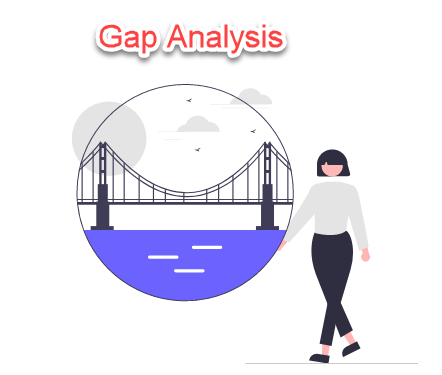Home » Enterprise Architecture » Page 8
In the dynamic world of business and technology, staying ahead of the curve is not just a goal; it's a necessity. The key to success lies in mastering the art of Enterprise Architecture (EA) – the blueprint that shapes and optimizes your organization's journey toward excellence. Visual Paradigm, your trusted partner in this journey, is here to redefine how you approach EA. Join us as we embark on an exciting exploration of cutting-edge tools and industry-best practices that have propelled the world's most renowned enterprises to unprecedented heights. Whether you're a seasoned architect…
continue reading →
Introduction In today's fast-paced business environment, enterprises are constantly seeking ways to align their IT strategies with their overall business goals. The Open Group Architecture Framework (TOGAF) provides a comprehensive approach for achieving this alignment, and ArchiMate, an open and independent modeling language, offers a powerful tool to visualize and communicate complex architectural concepts. In this article, we will explore how ArchiMate can be seamlessly integrated into TOGAF's Architecture Development Method (ADM) to enhance architectural practices and facilitate effective communication across all levels of an organization. Understanding TOGAF ADM The TOGAF ADM is…
continue reading →
Introduction to TOGAF In the ever-evolving landscape of enterprise architecture frameworks, TOGAF® (The Open Group Architecture Framework) stands as a resilient and enduring framework that has been serving the technology industry for nearly two decades. Developed by The Open Group, a not-for-profit technology industry consortium, TOGAF® continues to evolve to meet the dynamic demands of the technology landscape. This comprehensive guide will walk you through the essentials of TOGAF®, making it accessible to beginners and offering a holistic view of this powerful framework. Here's a breakdown of what we'll cover: Understanding Enterprise Architecture…
continue reading →
TOGAF ADM Overview The TOGAF ADM is a foundational component of the TOGAF Standard, a time-tested and reliable framework that has been successfully employed by numerous enterprises over the years. Its primary objective is to guide the creation of an Enterprise Architecture that not only supports but also drives the realization of an organization's vision and requirements. TOGAF 10, the latest version, provides comprehensive guidance on developing enterprise architecture that facilitates effective change. What is the TOGAF ADM? The TOGAF ADM represents a logical, systematic approach to acquiring knowledge necessary for enterprise architecture…
continue reading →
Introduction In the realm of software engineering and system design, creating a comprehensive and well-structured architecture is essential for building complex systems. Unified Modeling Language (UML) is a powerful tool that facilitates the visualization and documentation of system architectures. One widely adopted approach for modeling system architectures using UML is the "4 + 1" view model. This model offers a holistic perspective on system architecture, breaking it down into five distinct views that collectively provide a comprehensive understanding of the system. In this article, we will explore the concept of the "4 +…
continue reading →
What is a Gap Analysis A gap analysis is a tool used to compare the current state of a business or organization with its desired future state. It involves identifying the gap between where the organization currently stands and where it wants to be, in order to identify areas of improvement and develop strategies for closing the gap. Gap analysis can be used by individuals, teams, or organizations to identify areas for improvement in a variety of contexts, such as: Business strategy: To identify gaps in the organization's business strategy and align it…
continue reading →
The Target State Architecture Report is a critical document that outlines the technical components and capabilities required to achieve an organization's strategic goals. It serves as a roadmap for the future state of an organization's technology infrastructure and provides a clear understanding of the architecture that will support the company's business objectives. Summarize the Current and Target State Architecture A current and target state comparison table is a summary of the technical components and capabilities of an organization's current state (i.e., how things are currently set up) versus their target state (i.e., where…
continue reading →
A business capability assessment is a process of evaluating an organization's capabilities and resources, identifying its strengths and weaknesses, and determining its readiness to achieve its strategic objectives. This assessment helps businesses to identify the gaps between the current state and the desired state of the organization. It also enables the management to identify areas of improvement and prioritize investments to achieve the desired goals. Business Capability Assessment Report Template Here's a template for a Business Capability Assessment Report: Business Capability Assessment Report Introduction Brief overview of the purpose and scope of…
continue reading →
In today's rapidly changing business environment, digital transformation has become a key imperative for organizations looking to stay competitive and meet the evolving needs and expectations of customers. One area where digital transformation is particularly critical is retail, where customer expectations for seamless, personalized, and convenient experiences have never been higher. In this context, a retail store is facing a range of operational inefficiencies and customer dissatisfaction due to outdated technology and ineffective customer service processes. This has led to a need for a comprehensive digital transformation strategy to address the root causes…
continue reading →
What is a Stakeholder Interview Stakeholder interviews are a process of engaging with individuals who have a vested interest in the success or outcome of an enterprise architecture (EA) project. The purpose of conducting stakeholder interviews is to gather insights and feedback from stakeholders in order to identify their needs, expectations, concerns, and pain points related to the project. For EA projects, stakeholder interviews are a crucial component of the project planning phase, as they help ensure that the project goals align with the needs of the stakeholders. Stakeholder interviews provide an…
continue reading →









